I’ve seen a trend in plant tags and online plant profiles: The words “aggressive” and “spreading” are being replaced with the seemingly more friendly “naturalizes.” Now I know our gut reaction to any of these words is to run screaming for the nursery exit, but there is a place for rhizome-stretching, self-seeding marauders. And there are some native plants I love to see have at it.
I will always be a proponent of using natives to help insects and other wildlife, and in some instances — like acreage covered in aggressive exotics — exuberant natives can help you fight back. First let’s look at the often contentious nature of fast-spreading plants and the issues surrounding their use.
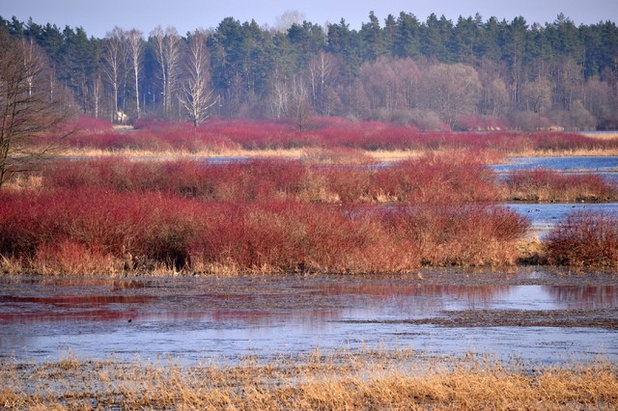
m.kotiuk
The difference between “aggressive” and “invasive.” They are not equal words. “Invasive” means that the plant crowds out local native plants, depriving those natives of sun and soil nutrients and generally changing the overall environment permanently. There are exotic plants that literally change the soil structure via microbes attached to their roots that make it impossible for natives to grow (this happens a lot on prairies, for example). “Invasive” carries connotations of severe ecological change to the detriment of local plants and wildlife.
Yes, an aggressive native may produce a monoculture of its own, but I say three things toward that: 1. In “wild” nature, plants tend to colonize in drifts and masses (hence the fact that the New Perennial movement mimicking these natural drifts in is vogue); 2. One could argue that in many, though not all, instances, even aggressive native plants are part of the native ecology, and eventually other natives will get their turn as the climate changes and the herbivore patterns evolve from year to year; and 3. Aggressive native species can help us crowd out exotic invasives and restore some ecological balance.
Obviously, the above points can change when you design a smaller garden. It’s really not a good idea to use aggressive plants in a small space, like an urban garden or a foundation bed.
Shown: A natural drift of redtwig dogwood (
Cornus sericea)
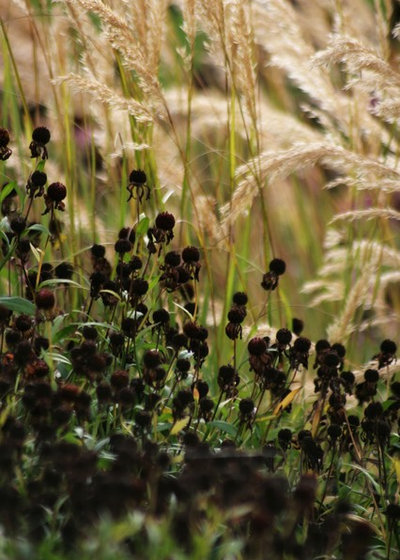
Laara Copley-Smith Garden & Landscape Design
How They SpreadRhizome spreaders. To some degree a plant getting around by rhizomes is predictable — you can usually figure out by research how fast and how far it will go given your soil and light, plus you know it probably won’t poke up 50 feet away in one year (unless you feed it steroids).
Self-seeders. Those that produce a lot and are known to sprout readily can fly all over the place, popping up seemingly anywhere. Add in the fact that birds eat and then poop out the seeds miles away, and I feel you have a different ballgame, as compared to plants with aggressive rhizomes.
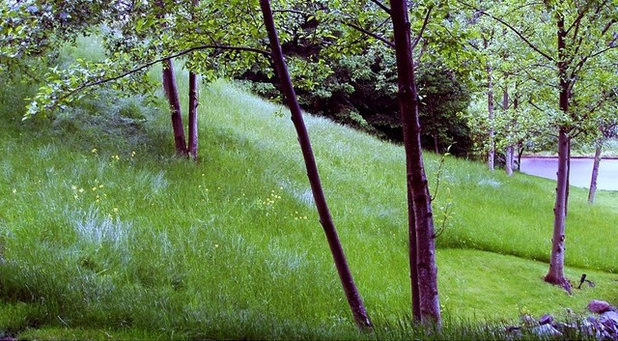
THOMAS KYLE: Landscape Designer
Why Plant Aggressive Natives
1. The tough spot. Whether the area floods and then dries out like a brick, or is simply a dry brick all of the time while in full shade to boot, there’s nothing more annoying than trying to find the right plant for a difficult place in the landscape. You could go through years of trial and error — well, mostly error. If you have a large area, it can get expensive, so why not let the plants colonize?
A perfect place for a supercharged plant is a hillside, to prevent erosion.
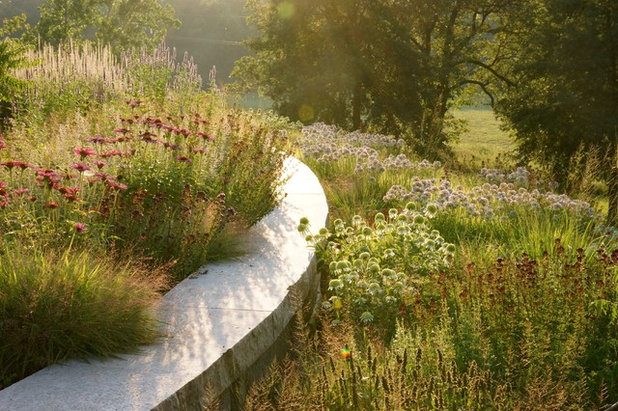
Adam Woodruff + Associates, Garden Artisans
2. Clean design. A general rule of thumb is: The smaller the bed, the fewer species you should have in it. Maybe you have 100 square feet, and perhaps you should have 10 or fewer species in it — maybe even five or less. Letting plants spread themselves in nice drifts makes for a modern, calming design that seems (generally) well thought out. For some people nothing screams “weedy mess” like too many species in a small space.
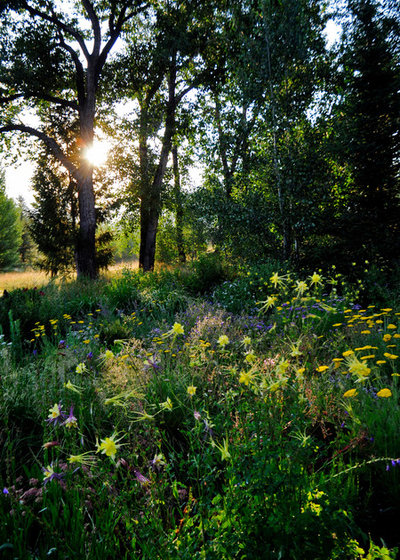
HABITAT Landscape Architecture
3. Less fuss. Sometimes it’s a real nightmare keeping track of which plants are doing what, which has mold or is attracting some plague, which needs water, which maybe needs to be moved or divided. Too many species complicates maintenance. Let your thugs have their way a bit, and it’ll be easier to see what’s going on, both the good and the bad.
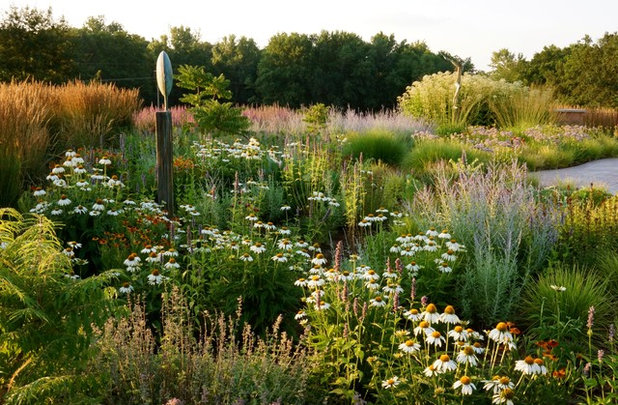
Adam Woodruff + Associates, Garden Artisans
4. Support wildlife. I guarantee you that a patch of sunflowers will be nirvana for countless insects, birds and mammals. Really, sunflowers are like high-class buffets. The same could be said for a spread of showy milkweed, or grasses that provide cover for nesting birds and young animals or predators stalking said young animals. Maybe a few thousand square feet of sedge around a pond is helping purify the water so it’s habitable and drinkable.
“Aggressive” does not always mean “bad,” especially when we’re talking native plants adapted to local conditions, and the wildlife adapted to those plants through coevolution (wildlife that might not only help the plants spread, but also help control them through grazing). Maybe a bumper year for one plant means a bumper year of insects eating its leaves, and the following year you’ll have very few of either. One of the reasons exotic nonnatives can become invasive is that they have no natural predators here — whether in the form of insects, animals or a fungus.
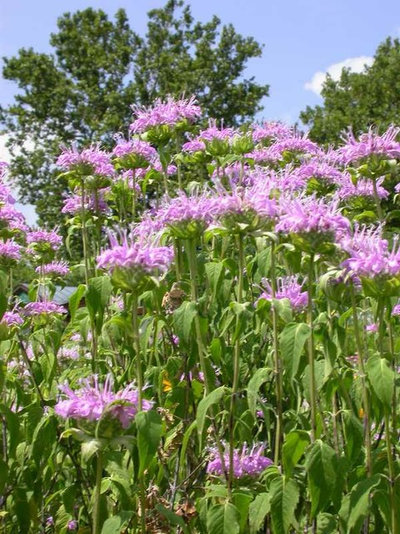
Missouri Botanical Garden
Native Plant SuggestionsSome are better suited for smaller areas, some for larger, so
plan and research accordingly.Wild bergamot (
Monarda fistulosa). Native to almost every U.S. state and Canada. Plant it in moist to medium soils (clay to loam) in full sun, where it will reach 2 to 4 feet tall and bloom throughout summer. It is a bee magnet, especially long-tongued bumblebees. It’s not as showy as hybrids and cultivars we see in the common nursery trade, but it seems to attract more insects in my garden and is long lived.
It self-sows. The small seeds don’t go too far on their own, as they are small and flightless, but where they do go, a plant springs up and in a few years will be a few feet across, as it spreads by rhizomes (which are easily divided or dug up).
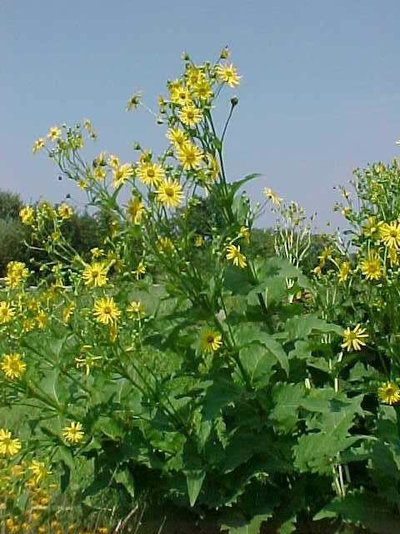
Missouri Botanical Garden
Cup plant (
Silphium perfoliatum). Native from the Great Plains all the way east. This is a cool plant for two reasons: The stems are big squares (like mints), and the leaves form a cup at the stem that catches rainwater, which birds drink from. Cup plant reaches 6 to 8 feet tall, blooms in high summer and likes a medium to wet soil, especially clay, so it’s a good choice for a large rain garden or pond or other lowland.
Cup plant is most certainly aggressive, spreading primarily by rhizomes but also by seeds, which birds eat and the wind carries aloft.
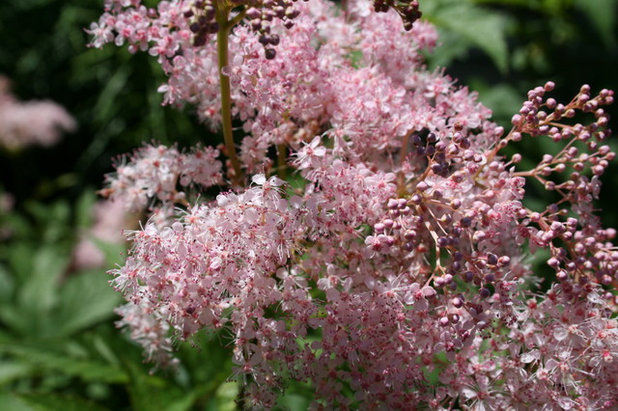
Benjamin Vogt / Monarch Gardens
Queen of the Prairie (
Filipendula rubra). Native to the upper Midwest, Great Lakes and Northeast. This is the sweetest, most fantastic-smelling plant ever — like roses, when roses had scent. Perfect for rain gardens or moist areas, Queen of the Prairie moves moderately by rhizomes and reaches about 4 feet tall in full sun to partial shade.
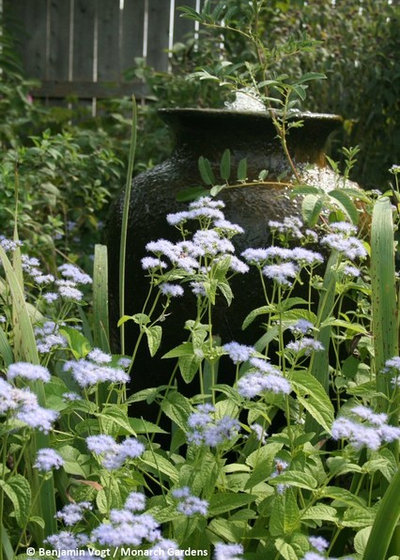
Benjamin Vogt / Monarch Gardens
Blue Mistflower (
Conoclinium coelestinum). Native from the central U.S. to the East Coast. This relative of Joe Pye Weed blooms in late summer into fall, reaching 2 to 4 feet tall. Thriving in sun to partisl shade in medium soil (it’s really quite adaptable, though moist might be best in full sun), this short plant will run and spread moderately fast. Diverse insects feed on the nectar, so it’s great for a butterfly garden.
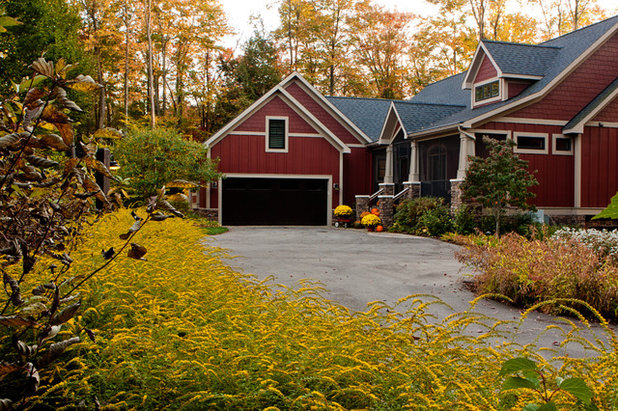
Blue Ridge Landscaping
Goldenrod (
Solidago spp). There are many species of goldenrod, and none cause hay fever. You probably know the aggressive self-sower
Canadian Goldenrod (
Solidago canadensis), which is often along roadsides.
Stiff Goldenrod (
Solidago rigida) is somewhat less aggressive, but there are shorter and better-behaved species, like the grassy-looking
Riddell’s (
Solidago riddellii) and
Zigzag (
Solidago flexicaulis). All goldenrod species are highly attractive to beneficial pollinating insects.
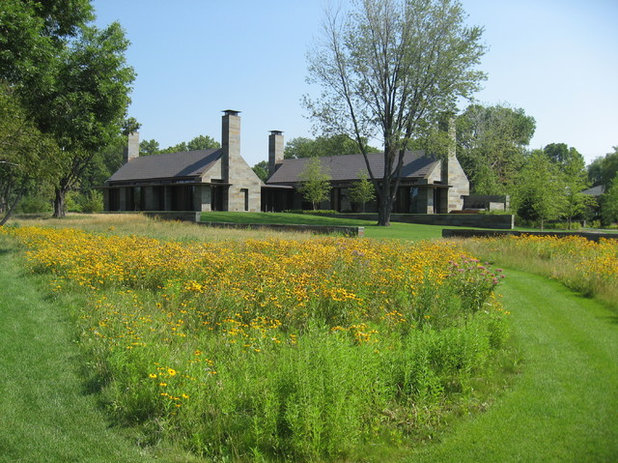
Martin Patrick 3
Before You Plant Aggressive Natives
Know your plants. Research is key, and plant tags do not constitute research. Check with local extension offices and read state or county noxious weed lists to make sure you aren’t considering a problem plant, native or not.
Research the plant via its Latin name to get accurate horticultural info and to learn from the experiences of others growing it, both professionals and novices.
Think long and hard about what you want the garden to look like in five to 10 years, and what you’re willing to deal with. As my daily G.I. Joe cartoon said in the 1980s, “Knowing is half the battle.”
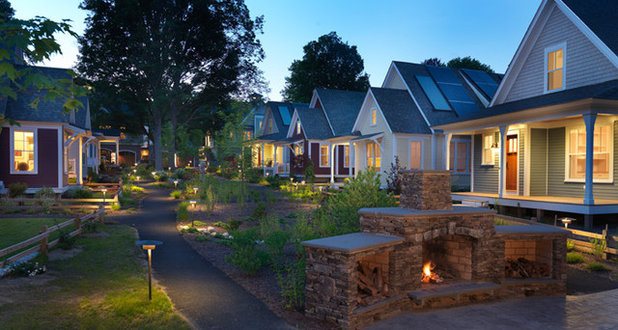
Union Studio, Architecture & Community Design
Consider your neighbors. If you’re planting a native that spreads easily by, say, rhizomes, maybe you shouldn’t plant it along your fence where in a year or two it’ll be in your neighbor’s space. I’ve heard about folks planting aggressive plants in buried containers, to which I laugh. No container is gonna hold back a plant from being itself. And further, no “safe” or “sterile” or “seedless” plant — native or not — will stay that way forever (there’s little more a plant wants to do than reproduce).





